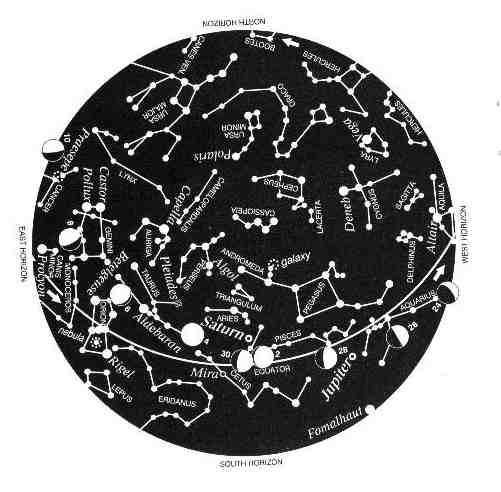
Astronomer Badge

 |
Astronomer Badge |
 |

THE SKY IN JANUARY AT 8PM
The Planets
Jupiter is the first "star" to be seen, bright in the south, after the sun goes down and setting around 10pm.
Saturn is visible most of the night and in the constellation of Pisces and looks like a yellow star. There are no other bright stars near by so it is easy to find.
Venus is also know as the "Evening star" because it is one of the first bright things to be seen after the sun sets. You can see it low in the west for about an hour after the sun goes down. Venus can be seen until July it will be at is brightest (-4.5 mag ).
The Stars
Aries, the ram can be found above Saturn it is faint and is hard to find.
Auriga, is the charioteer and is almost overhead, is bright star is called capella and sparkles red and green.
Taurus, the bull is just below Auriga and contains one of the brightest visible clusters that can be seen, "The Seven Sisters" or to give it its posh name "The Pleiades", seen through binoculars there are hundreds of stars.
Other Interesting things to look for
Once you have found Auriga scan the area inside the constellation there are three star clusters that can be found within its boundaries.
"The Hyades" is another large open cluster, where can it be found??
Badgework
Capella is one of stars in Auriga, but where can you find Alderbaran and Hamal?
Brightness of stars is measured in Magnitude, find out how it works.
Mercury is the closest planet to the sun find out what you can about it.
All this month's News was brought to you by "Mop" aka Scott Edwards SPL & Instructor Astronomer, so don't blame me if you can't find anything!!
Diary remember to keep your diary up to date. All it needs is a good Half Hour outside but don't let it interfere with your school work. I don't want blamed for you falling asleep in class.
***Clear Skies***
***Lorna***